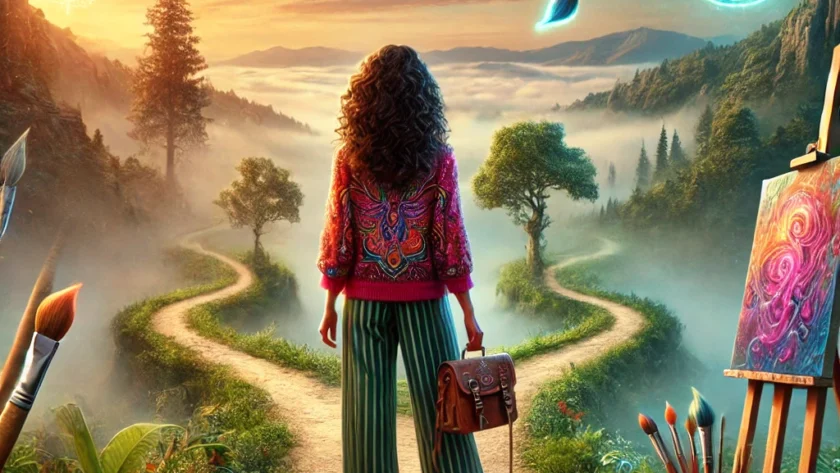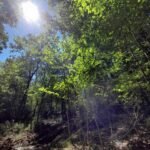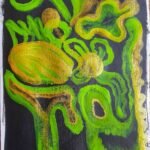“Not all those who wander are lost”
J.R.R. Tolkien
There is something profoundly transformative about stepping beyond familiar places and venturing into the unknown. People are naturally curious, yet they often hesitate to leave their comfort zones. But true self-discovery begins only when they embark on that journey.
Look at adventure-filled novels and movies—most of them revolve around a protagonist who sets off completely unprepared, unaware of what they will witness or experience. In fact, the very first card of the tarot deck, The Fool, represents this hero of ours. His journey is so significant that it doesn’t just change him—it affects us as well when we witness it through a story.
Because travel isn’t just about changing locations—it’s about expanding perspectives, embracing new experiences, and uncovering hidden layers of ourselves and our creativity. Whether it’s an actual journey across landscapes or an internal journey of self-discovery, the act of wandering sparks inspiration in ways that structured routines often cannot.
Creativity thrives in exploration. The colors of an unfamiliar street, the rhythm of a foreign language, or the scent of the ocean at dawn—each new experience imprints itself in the mind, fueling fresh ideas and artistic expression. By carving our own paths, both physically and metaphorically, we unlock new ways to see, feel, and create.
The Artist as a Wanderer: Finding Inspiration Through Movement and Connection
Creativity thrives on movement—both physical and mental. When we step beyond familiar surroundings, whether by traveling to distant lands or simply taking a different route home, we open ourselves to new perspectives. These moments of change, however small, can be the sparks that reignite creative energy. But exploration isn’t just about places; it’s also about the people we meet along the way.
The Power of Changing Your Environment
It’s no coincidence that many great artists have been wanderers. Van Gogh moved from the Netherlands to Paris, Arles, and finally to Auvers-sur-Oise, each location influencing his color palette and technique. Georgia O’Keeffe’s deep connection with the landscapes of New Mexico became the lifeblood of her work. Even if we don’t have the luxury of constant travel, exploring new places—even within our own city—can break creative stagnation.
Simple ways to incorporate movement into your creative process:
- Take daily walks with intention. Observe the way light falls on buildings, how tree branches intertwine, or how people interact in a café.
- Sketch, photograph, or write about small discoveries. A shadow pattern on a wall, an unusual flower, or the rhythm of city life can become creative fuel.
- Seek micro-adventures. Visit a part of your town you’ve never been to, take a different route, or even rearrange your workspace to shift your perspective.
For example, my little sketchbook and watercolor set that I carry in my bag when I go out have always come to my aid in those moments when I think with excitement and inspiration, “I should paint this place right now.” Whether it’s a street, a building, or a horizon overlooking the sea, these landscapes have turned into truly inspired drawings and paintings. Having the tools ready to capture these fleeting moments allows creativity to flow naturally, turning ordinary outings into sources of artistic energy.

Once, while walking in a large nature park, I came across two cute cats. While petting them, one of them opened its mouth to meow just as a small orange butterfly flew out. Both the cats and I stared after the butterfly, mesmerized by this fleeting, fairytale-like moment. Witnessing this magical scene reminded me why I strive to keep the enchantment of the natural world alive in my art.
These unexpected encounters—whether in nature or in everyday life—serve as quiet yet powerful reminders of the beauty, mystery, and interconnectedness of all living things.
The People We Meet Along the Way
Art is deeply personal, yet it is also a reflection of the human experience. The stories we gather from people we meet—whether fleeting encounters or deep conversations—can shape the way we see the world and, in turn, our creative expression.
- Conversations that Stay With You: A chat with a stranger in a foreign country, an elderly woman sharing a childhood memory, or an artist discussing their process can all become seeds of inspiration.
- Cultural Perspectives: Traveling exposes us to different traditions, philosophies, and ways of seeing life. These insights can challenge our assumptions and expand our creative voice.
- Kindred Spirits & Unexpected Mentors: Sometimes, the right conversation comes at the right time. A chance meeting with a fellow traveler, a local artisan, or someone with a completely different worldview can offer new ways of thinking.
When I enter a different culture, I feel that the architecture, ways of thinking and behaving, traditions—in short, the society that brings this culture to life—opens a different, brand-new door somewhere in the depths of my soul. And despite the passing of time, that door remains ajar, never fully closing, continuing to feed my world of dreams and ideas. Every culture we encounter becomes a part of us, subtly weaving itself into our artistic vision, sometimes appearing in colors, forms, or even the emotions we pour into our work.
Even outside of travel, meaningful interactions can happen anywhere—a conversation with a neighbor, an old friend, or even someone you only meet once. As artists, we absorb these moments, turning them into visual narratives, poetry, or melodies.
Balancing the Inner and Outer Journey
While the external world provides an endless well of inspiration, the true journey of an artist is also internal. Movement and connection are tools, but ultimately, it’s how we process experiences that shapes our art.
- Journaling & Reflection: Keep a travel sketchbook or a creative diary, not just for grand trips, but for everyday thoughts and observations.
- Embracing Solitude: Just as wandering through a forest brings new sights, solitude allows inner landscapes to surface. Give yourself space for quiet moments of reflection.
- Experimentation & Play: Let new experiences translate into creative risks—try a different medium, change your usual workflow, or create something purely for the joy of it.
By embracing both physical and internal exploration, along with the human connections we make, we become not just creators, but lifelong discoverers—forever wandering, observing, and expressing.




